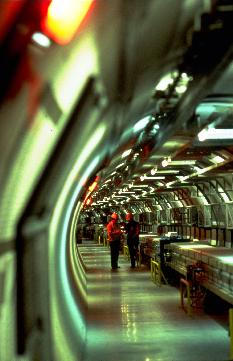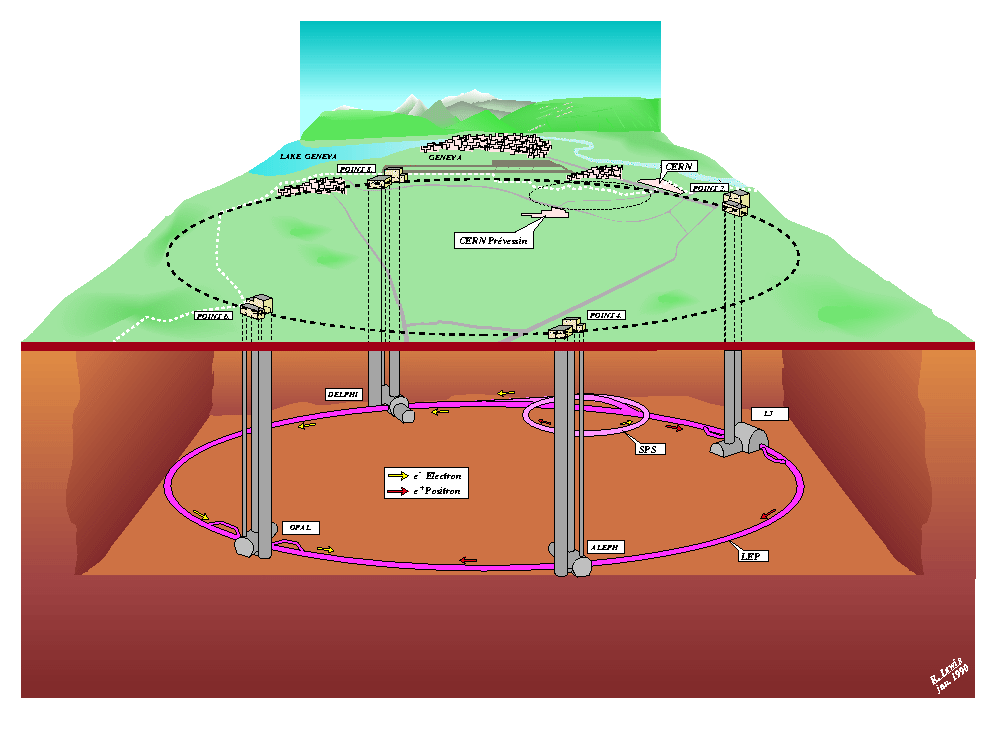 Home Home
 Introduction Introduction
 Personnel Personnel
 Research topics Research topics
 Links Links
|
Introduction to the DELPHI experiment
The LEP Accelerator
Modern science of particle physics is heavily based on high energy
accelerators, which produce wide range of elementary particles for
consecutive studies. For precision analysis, electron-positron
colliders are factories which provide scientists with sufficient
statistical material of high purity. The biggest contemporary
accelerator of this kind has been built in the European Particle
Physics Laboratory, CERN.
 The CERN Large Electron Positron (LEP) collider is a 26.67 km circumference electron-positron storage ring, which
is designed to operate in an energy range of 20 GeV to 50 GeV per
beam at the first stage (LEP1) and up to 90 GeV at the second
stage (LEP2).
The
basic feature of the LEP design is a large accelerating ring
circumference in which the machine is installed in stages
corresponding to the new physics events that are predicted by the
unified theory of weak and electromagnetic interactions.
The CERN Large Electron Positron (LEP) collider is a 26.67 km circumference electron-positron storage ring, which
is designed to operate in an energy range of 20 GeV to 50 GeV per
beam at the first stage (LEP1) and up to 90 GeV at the second
stage (LEP2).
The
basic feature of the LEP design is a large accelerating ring
circumference in which the machine is installed in stages
corresponding to the new physics events that are predicted by the
unified theory of weak and electromagnetic interactions.
 The first
such event is the Z0 boson at an energy of about 90 GeV. Since
these bosons can be produced singly, the LEP1 machine energy was about
45.6 GeV per beam, giving 91.2 GeV in the centre of mass.
The next
important event is the production of pairs of the charged intermediate
bosons (W+W-) at an energy of about 180 GeV, which requires LEP2
energies of about 90 GeV per beam.
The first
such event is the Z0 boson at an energy of about 90 GeV. Since
these bosons can be produced singly, the LEP1 machine energy was about
45.6 GeV per beam, giving 91.2 GeV in the centre of mass.
The next
important event is the production of pairs of the charged intermediate
bosons (W+W-) at an energy of about 180 GeV, which requires LEP2
energies of about 90 GeV per beam.
|

|